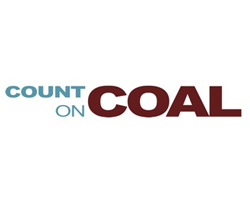Congress's Kill Switch

May 17, 2017 - Judged by the reviews from the toughest critics, Washington has a new hit on its hands. “Historic” says The New York Times. “Ambitious” says The Washington Post. “A once-in-a-generation opportunity,” says Politico.
They’re describing the Congressional Review Act’s (CRA) impact on regulations.
When President Obama said he had a pen and threatened to use it, Congress replied it had the CRA and did use it. By the Thursday deadline for the Obama rules, Congress used it like a taser to paralyze 14 regulations – two aimed at mining communities.
The Office of Surface Mining’s (OSM) stream rule and the Bureau of Land Management’s (BLM) land-use planning rule were early targets of congressional resolutions of disapproval. Like other regulations rolled back, neither enjoyed the support of a bi-partisan congressional majority. The reason they didn’t, said Majority Leader Mitch McConnell (R-Ky.), is because these rules “nearly always empowered unaccountable Washington bureaucrats at the expense of the American people.”
Rhetoric aside, Sen. McConnell makes a larger point about the growing concentration of presidential power that applies to every administration. The CRA, in its short but eventful life in this Congress, revived a truly democratic practice. It gave elected representatives a decisive voice in major policy decisions affecting the economy as well as the environment.
Consider the stream rule. Should Congress have looked on helplessly as a regulatory agency decided to render more than half of the world’s largest coal reserves useless? OSM claimed with a straight face that keeping this enormous resource in the ground would have increased net employment by replacing lost mining jobs with new regulatory managers. Apologies to Queen Victoria, but we were not amused and thankfully neither was Congress impressed by this absurdity. It’s more plausible to expect increased employment from eliminating OSM.
Congress also used the CRA to overturn BLM’s plans to discourage multiple uses on millions of acres of mineral-rich federal land. By enshrining the nebulous concept of “landscape scale planning” in its “2.0” rule, the agency tried to expand the authority of its political appointees in Washington at the expense of the agency’s experts in regional offices and local stakeholders who are most impacted by the agency’s decisions.
Like the EPA’s attempt to expand its jurisdictional expansion with its waters of the U.S. rule – also overturned by the CRA – BLM would have expanded its authority to serve environmental NGOs by simply ignoring Congress’s plain language directing the agency to manage public lands “in a manner which recognizes the Nation’s need for domestic sources of minerals.”
The fate of these two mining rules shows the value of the CRA as a tool for the re-assertion of congressional authority over a wayward bureaucracy. It’s not about rolling back environmental protections; it’s preserving Constitutional protections.
.png)

